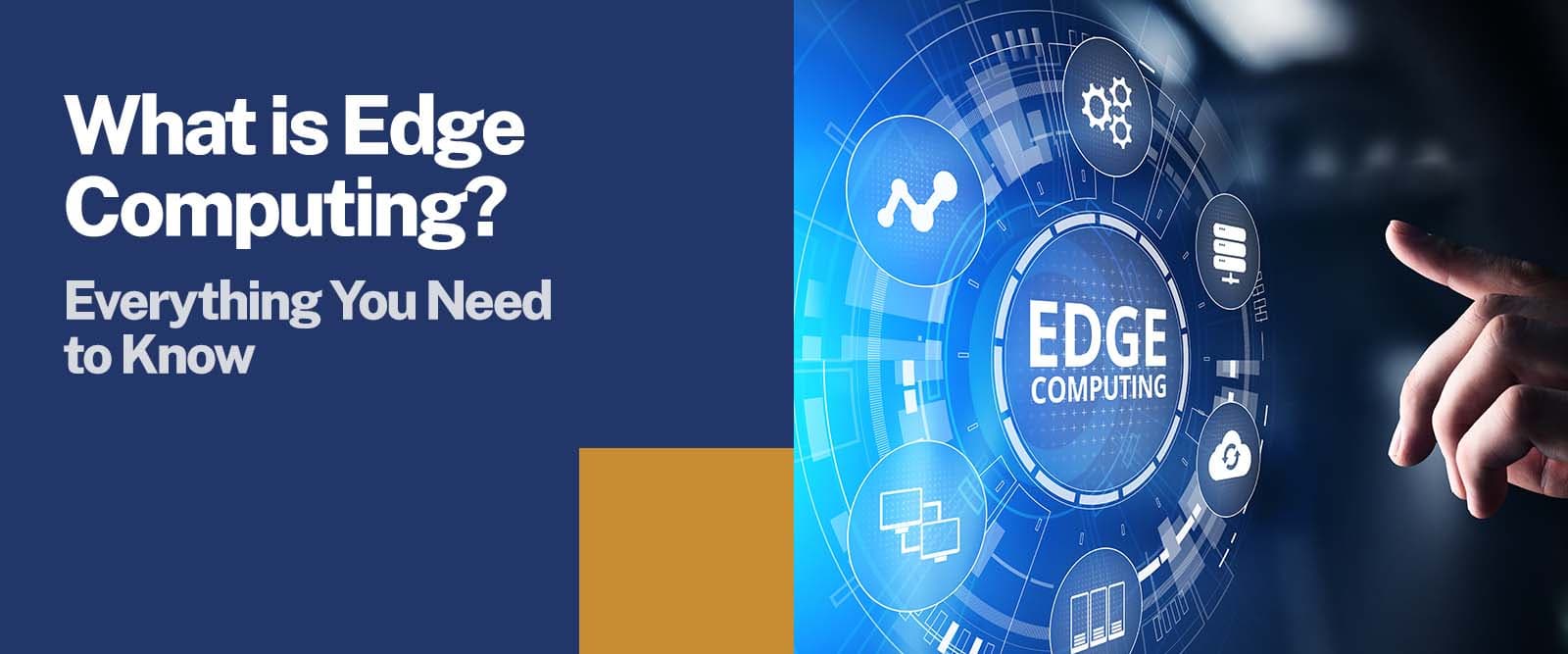5800 students unlocked their dream jobs with UG/PG programs in top colleges. Apply Now!
Data is the heart of modern businesses as it helps in gaining valuable insights and supports real-time control over daily business operations. The current era is ruled by an abundance of data, with sensors and IoT devices collecting vast amounts of data in real time from almost any location in the world, including harsh and remote environments.
However, this abundance of data is transforming the way businesses approach computing. The traditional computing approach that relies on a centralised data centre and the internet is not well-suited for handling the growing volume of real-world data.
Limitations in bandwidth, latency, and network disruptions can all hinder the analysis of such data. This is where edge computing, one of the top new technology trends, comes into play. This edge computing technology is increasingly essential for businesses, whose concept is often taught in a B.Tech program.
What is Edge Computing: Edge Computing Meaning
Describing what's edge computing in layperson's terms can be challenging because it can take many forms and happen in a variety of settings. Edge computing essentially involves capturing, processing, and analysing data near where it is generated.
Edge devices must process the data they collect, provide timely insights, and, if appropriate, take appropriate action to function well. Edge computing involves enabling these edge devices to perform these functions without transporting data to a different server environment.
In other words, edge computing means bringing data and computing resources closer to the point of interaction.
Edge Computing Definition
Nima Negahban, CTO of Kinetica, describes edge computing as real-time data analysis that occurs on a device. Edge computing involves processing data locally, while cloud computing involves processing data in a data centre or public cloud. In simple terms, edge computing is analysing data on a device in real-time.
Overall, edge computing is a straightforward idea that involves bringing computing resources closer to where data is generated, rather than the traditional approach of moving the data to a central data centre. This enables quicker reactions and analysis of data at its source, using available storage and computing capabilities.
Benefits of Edge Computing
-
Minimises Latency
Latency pertains to the time needed to move information between two network points. When these points are far apart, and there's network traffic, it can cause delays. Edge computing resolves this issue by bringing the points closer together, thereby almost wholly eliminating latency problems.
-
Conserves Bandwidth
Bandwidth is the data transfer rate of a network. Since networks have limited bandwidth, the amount of data that can be moved and the number of devices that can process it is restricted. By placing data servers where data is created, edge computing permits many devices to function with a more efficient and smaller bandwidth.
-
Decreases Congestion
Despite the advancements of the Internet, the vast amount of data produced every day by billions of devices can still cause significant congestion. Edge Computing addresses this problem by having local storage and servers that can carry out crucial analytics at the edge, even in the event of a network outage.
Some Use Cases of Edge Computing
-
Smart Home Devices
Devices such as smart speakers, watches, and phones collect and process data locally. In a smart home, numerous IoT devices gather data from around the house, which is then sent to a remote server for storage and processing.
However, this architecture can cause problems during network outages. Edge computing can mitigate these issues by bringing data storage and processing centres closer to the smart home, reducing backhaul costs and latency.
-
Cloud Gaming Industry
Edge computing is also helpful in the cloud gaming industry, as it allows gaming companies to deploy servers closer to the gamers, thereby reducing lags and providing a more immersive gaming experience.
-
Security in Commercial Settings
In commercial settings, organisations can use edge computing to enable real-time video monitoring and biometric scanning to ensure that only authorised individuals and approved activities are taking place.
For instance, companies can deploy edge devices that use optical technologies to perform iris scans instantly, and edge computing can analyse the images to confirm worker matches with authorised access. In consumer settings, edge computing can analyse data from security products like video doorbells and security cameras in real-time to provide greater security and safety.
More use cases include Self-driving Cars that require immediate responses without relying on a server for instructions and Medical Monitoring Devices at hospitals that need to provide real-time responses without depending on cloud servers.
Disadvantages of Edge Computing
Despite its numerous benefits, edge computing is still a relatively new technology and has its challenges. Below are some of the most vital limitations of edge computing:
- High Implementation Costs: The implementation of an edge infrastructure in an organisation can be a complex and expensive process. It requires precise planning and purpose before deployment, as well as additional equipment and resources to function correctly.
- Inadequate Data Processing: Edge computing can only process partial sets of data, which must be clearly defined during implementation. As a result, companies may lose valuable data and information that cannot be processed by the system.
- Security Risks: Because edge computing is not a centralised system, ensuring adequate security can take time and effort. Processing data outside the network edge can pose risks, and the introduction of new IoT devices can increase the opportunity for attackers to hack the system.
Conclusion
The use of edge computing has revolutionised data analytics, leading many businesses to rely on this technology for fast and efficient data-driven operations. If you're interested in learning more about edge computing, pursuing a Bachelor of Technology degree in Cloud Computing or Computer Science can provide you with the necessary expertise to become a cloud specialist, one of the best-paying jobs in technology.
Sunstone, a prominent provider of higher education services, can help prospective B.Tech program students secure admission at leading engineering institutions. In addition to admission support, our platform also offers fee-payment assistance and immersive internship opportunities to students who enrol with us.
FAQ - Edge Computing
How edge computing redefines infrastructure?
Edge computing moves enterprise apps closer to where data is generated. This generates a lot of interest among industries, researchers, and academics. As technology advances, we can expect to see more energy-efficient, durable, and small embedded machines used for computing.
When was edge computing invented?
Edge computing originated in the 1990s with the content delivery network (CDN) of Akamai, an Internet company headquartered in the United States. In 1997, computer scientist Brian Noble showed how mobile tech could use edge computing for speech recognition.
Why was edge computing introduced?
The objective of edge computing was to reduce the amount of data that needs to be sent back to the cloud for storage and processing. This is especially useful for data-sensitive apps and those that generate a lot of data, like high-definition video capture.
HELP
Take the first step towards your dream job.
ABOUT THE AUTHOR

